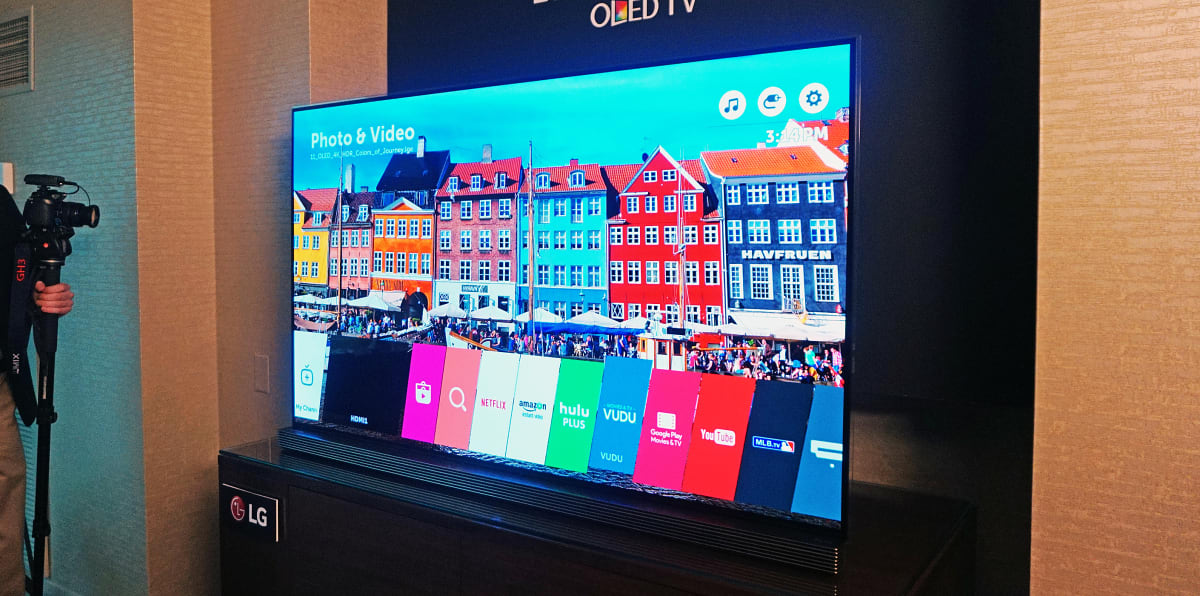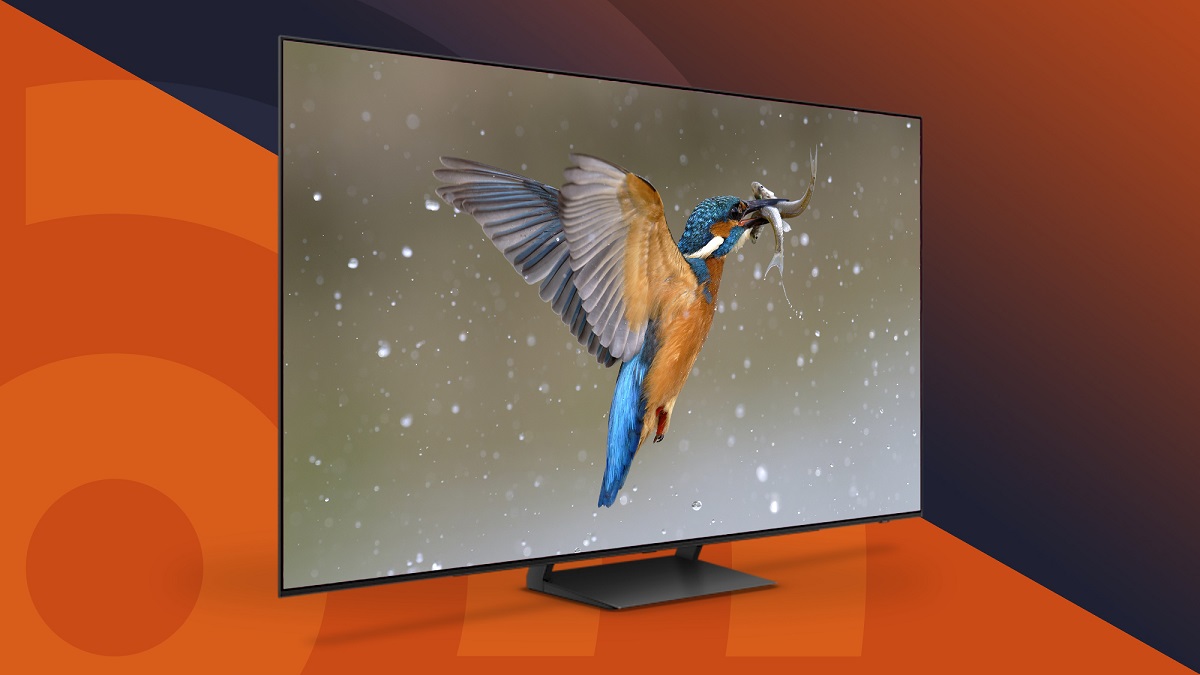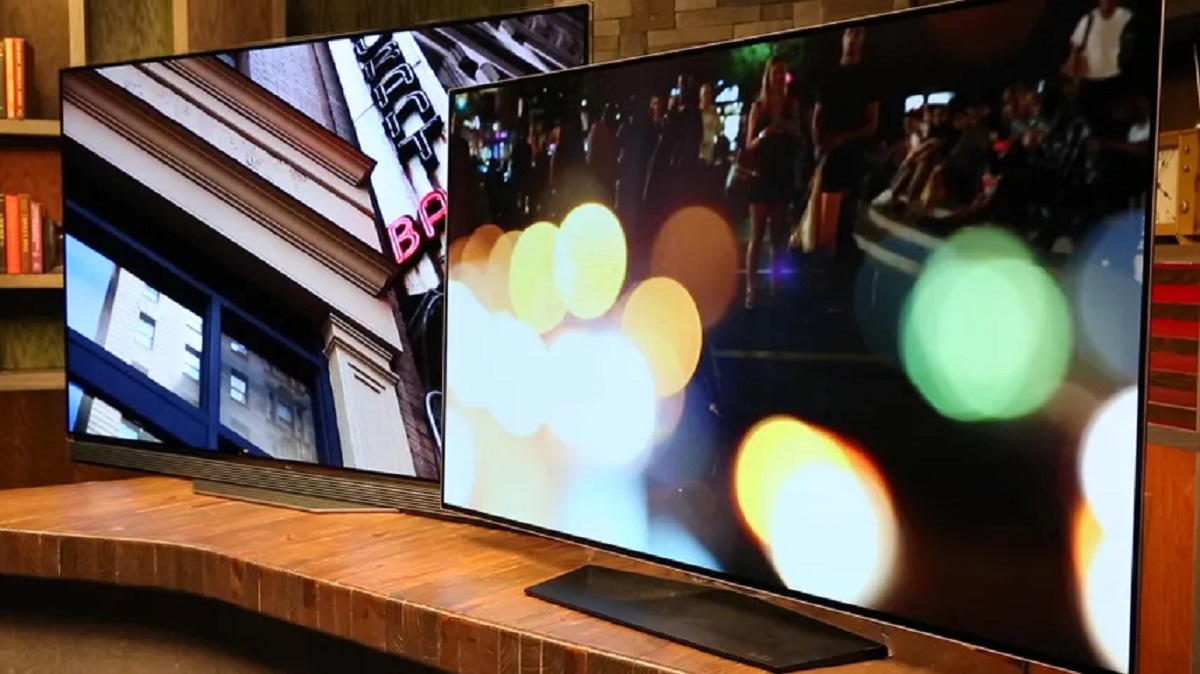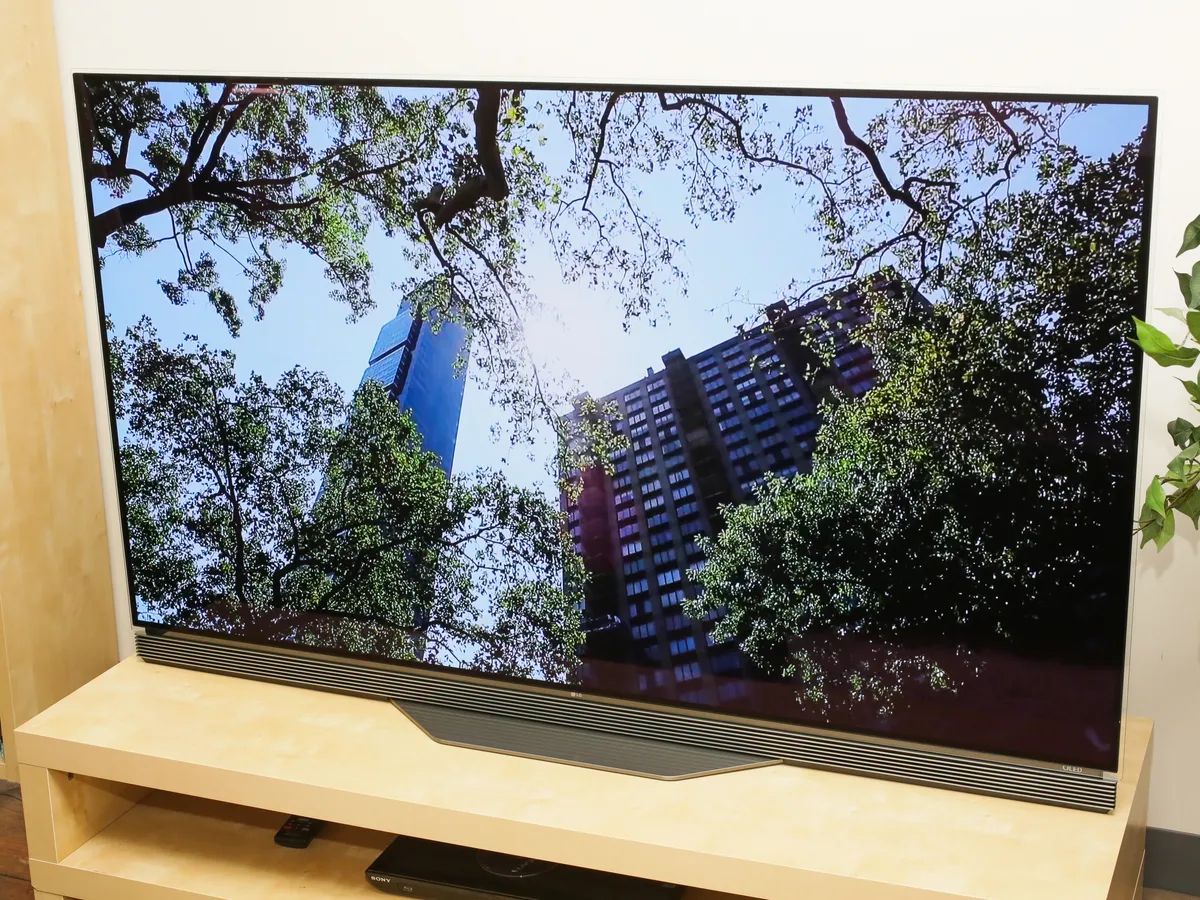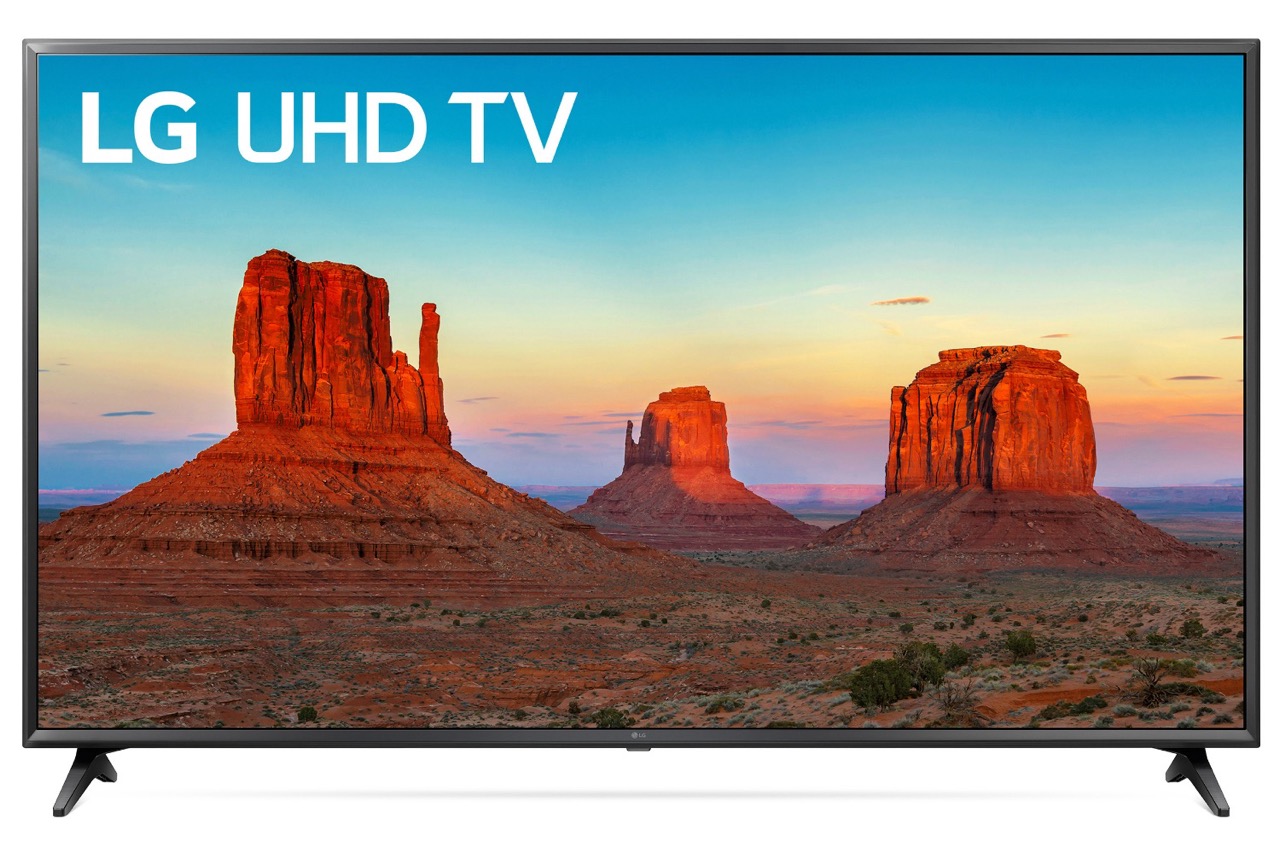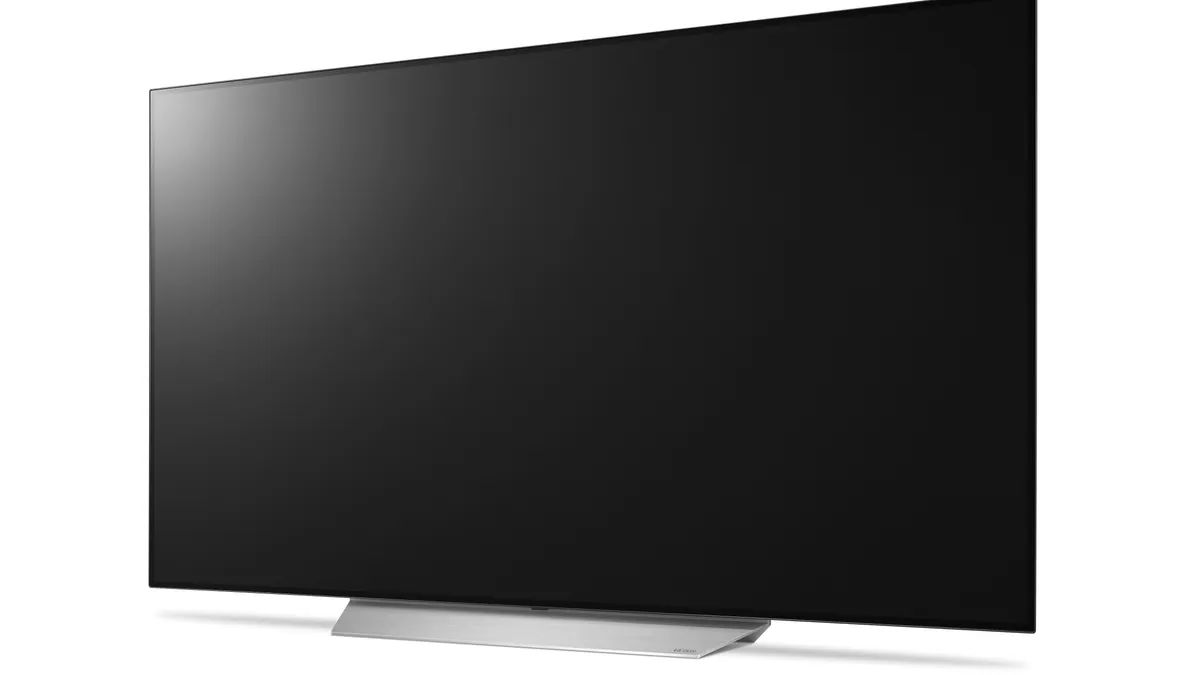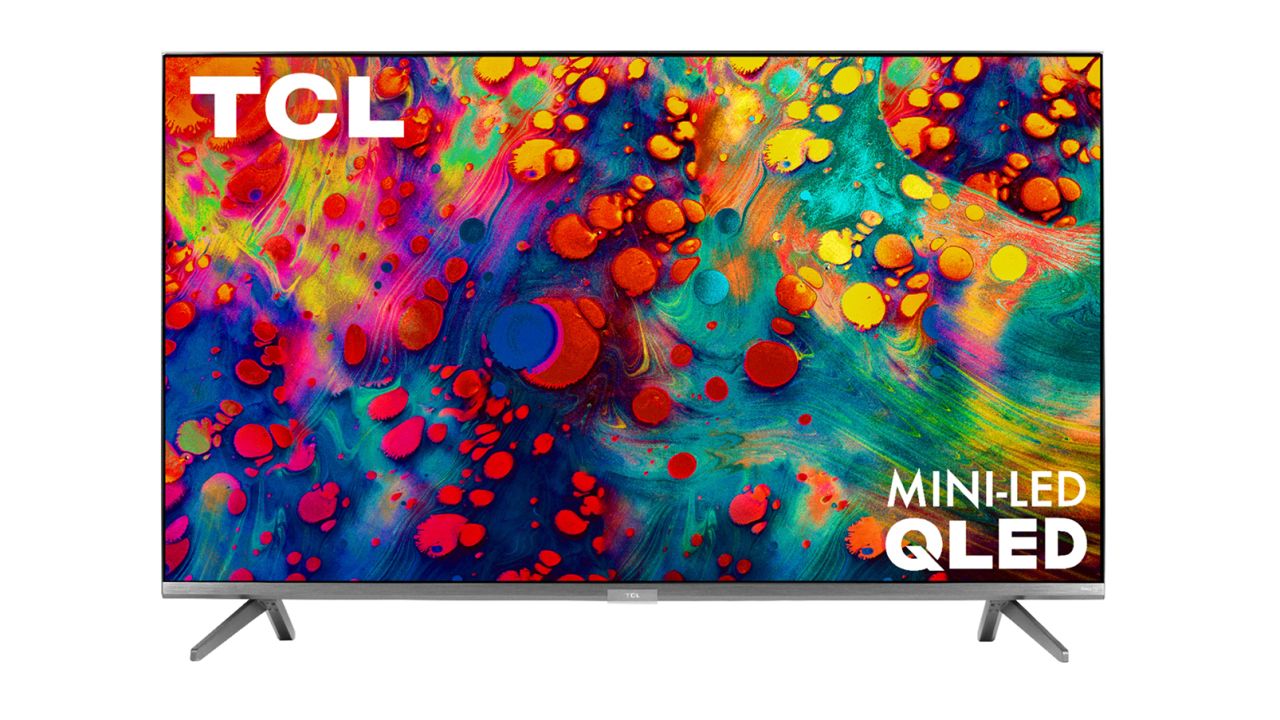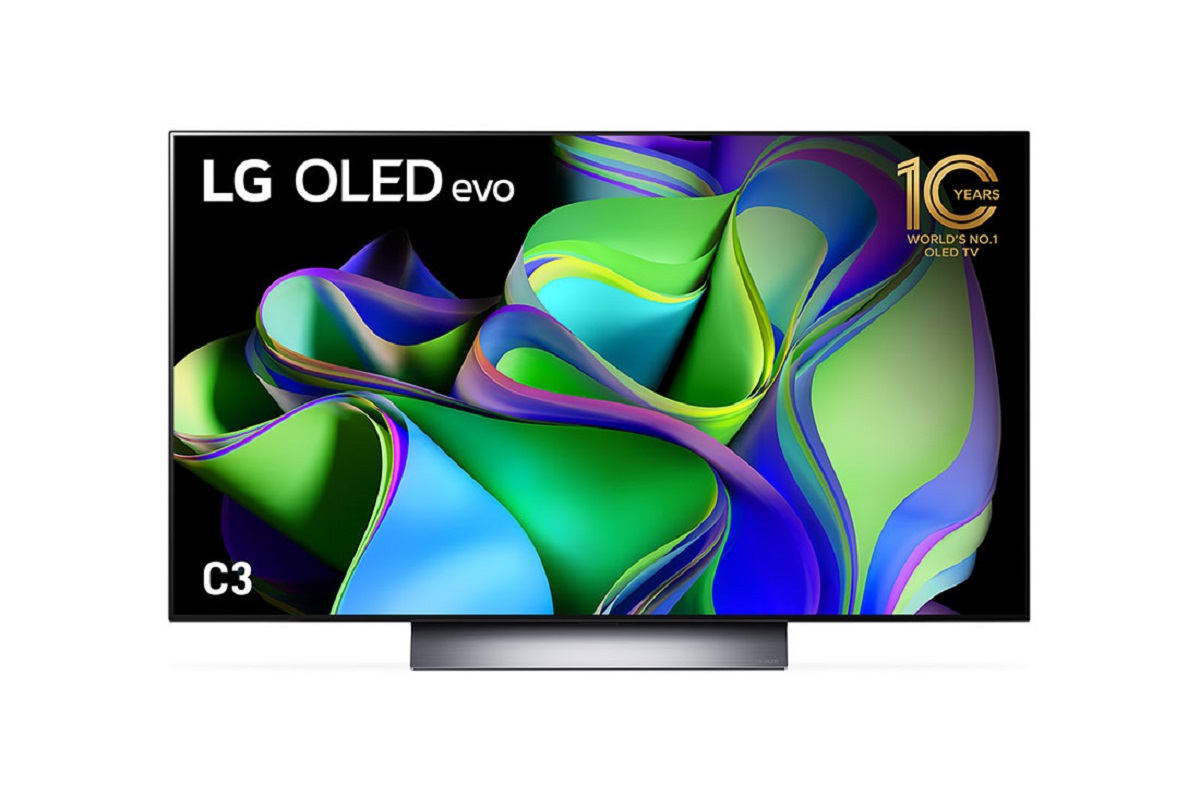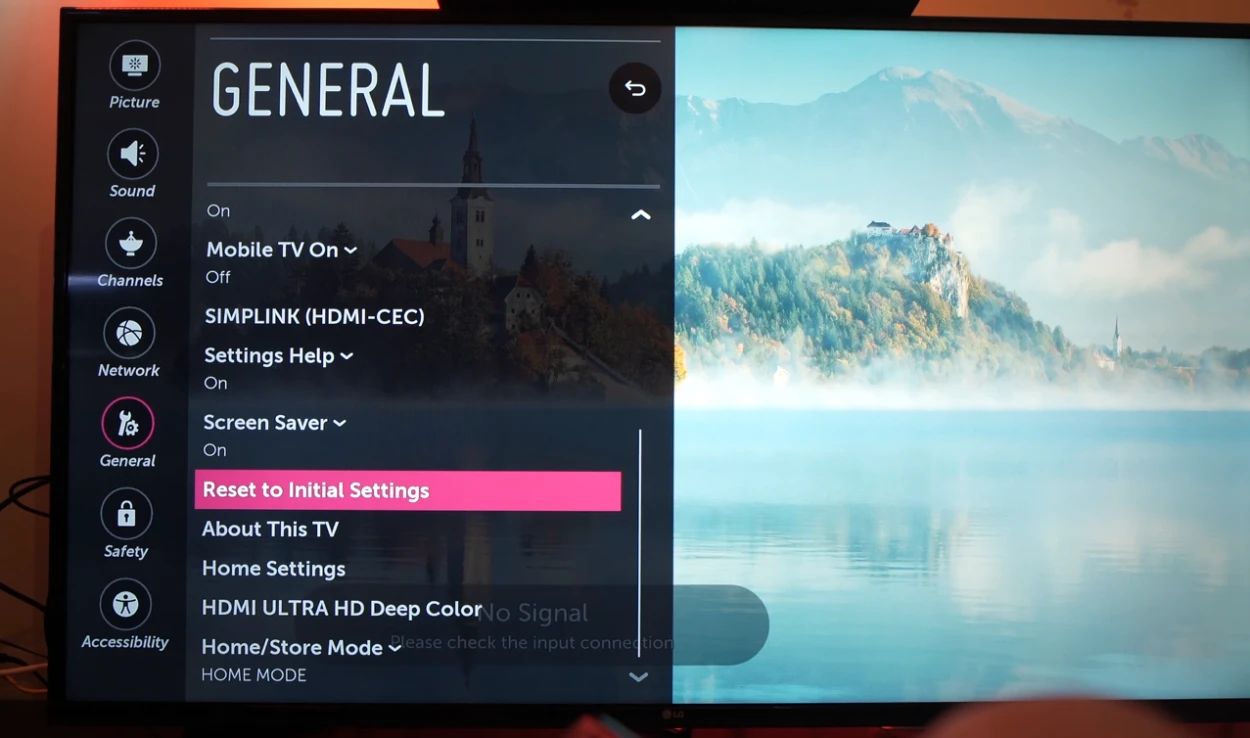Introduction
The evolution of television technology has been remarkable in recent years, with LG leading the way in innovation. LG’s OLED (Organic Light-Emitting Diode) TVs have gained significant attention and praise for their exceptional picture quality and sleek design. However, with each passing year, LG continues to push the boundaries of what is possible, improving upon their previous models. In this article, we will explore the differences between the 2015 LG OLED TV models and the 2016 models.
LG has always been dedicated to providing consumers with cutting-edge designs, and the 2015 and 2016 OLED TV models are no exception. While both feature a slim and sleek appearance, the 2016 models take it to the next level with even thinner bezels, giving the TVs a more immersive viewing experience. Additionally, LG introduced a new, more refined stand design, adding a touch of elegance to the overall aesthetic.
When it comes to display technology, LG has made significant advancements in OLED technology. The 2015 models boast impressive picture quality, with deep blacks, vibrant colors, and wide viewing angles. However, the 2016 models take it a step further with improvements in brightness levels and color accuracy. LG’s commitment to enhancing the viewing experience is evident in the 2016 OLED TVs, providing viewers with a more lifelike and immersive visual experience.
One of the key differences between the 2015 and 2016 models is the support for HDR (High Dynamic Range) content. HDR technology enhances the contrast and color accuracy of the content, resulting in a more realistic and vivid image. While the 2015 models were not equipped with HDR support, the 2016 OLED TVs come with HDR capabilities, allowing viewers to enjoy a wider range of colors and improved detail in both dark and bright scenes.
In terms of smart TV features, LG has continued to refine its webOS platform, offering a user-friendly and intuitive interface. The 2015 models introduced webOS 2.0, which provided smoother navigation and improved app performance. However, the 2016 models come with webOS 3.0, offering even more advanced features, such as enhanced multitasking and quicker access to popular apps.
Sound quality is another area where the 2016 OLED TVs have seen improvements. LG has implemented new audio technologies to deliver a more immersive sound experience. The 2016 models feature enhanced speakers and support for Dolby Atmos, providing a realistic and engaging audio experience.
When it comes to connectivity options, the 2016 OLED TVs offer more versatility. LG has included additional HDMI and USB ports, allowing users to connect more devices simultaneously. This is especially beneficial for gamers and multimedia enthusiasts who require multiple devices connected to their TVs.
While the improvements in design, display technology, HDR support, smart TV features, sound quality, and connectivity are notable, it is important to consider the price and availability of both the 2015 and 2016 models. As newer models are introduced, the older models tend to become more affordable, making them a viable option for those on a budget. The availability of both models may also vary, as retailers may phase out the older models to make way for newer releases.
In summary, the 2015 and 2016 LG OLED TV models each offer their own set of advantages. The 2016 models come with notable improvements in design, display technology, HDR support, smart TV features, sound quality, and connectivity options. However, depending on individual preferences and budget constraints, the 2015 models may still be a compelling choice, delivering impressive picture quality and a range of features at a more affordable price point.
Design
When it comes to design, LG has always been at the forefront of creating TVs that are not only visually appealing but also blend seamlessly into any home decor. The 2015 and 2016 LG OLED TV models are no exception, with both offering sleek and modern designs.
The 2015 models feature a slim profile and minimalistic bezels, giving the TV a sleek and immersive look. The frame is made of high-quality materials, providing a sense of elegance and sophistication. The stand design is sturdy and well-built, ensuring stability and security when placing the TV on a surface.
In contrast, the 2016 OLED TV models take the design elements to the next level. LG has managed to reduce the bezels even further, resulting in a nearly edge-to-edge display. This creates a more immersive viewing experience, as the focus remains on the content being displayed rather than the surrounding bezels.
Furthermore, the stand design has been revamped in the 2016 models, adding a touch of elegance and uniqueness. The stand is sleek and minimalistic, complementing the overall design of the TV. It not only provides stability but also enhances the visual aesthetics of the television.
Another noteworthy aspect of the design is the overall slimness of the TVs. Both the 2015 and 2016 models are impressively thin, making them perfect for wall-mounting or placing on any surface. This slim profile adds a touch of modernity to the room and helps create a clutter-free environment.
Both the 2015 and 2016 OLED TVs from LG are a testament to the company’s commitment to design excellence. The attention to detail and utilization of premium materials result in televisions that not only deliver exceptional picture quality but also enhance the overall aesthetic of any living space.
Display Technology
The display technology used in LG OLED TVs has been a major selling point, and both the 2015 and 2016 models showcase LG’s prowess in this area.
The 2015 OLED TV models feature LG’s advanced OLED display technology, which provides exceptional picture quality. With OLED, each pixel emits its own light, allowing for precise control over brightness and contrast. This results in deep blacks, vibrant colors, and excellent contrast ratios, providing viewers with a visually stunning experience.
However, LG didn’t rest on its laurels, as the 2016 OLED TV models pushed the boundaries even further. These models come with improved OLED panel technology, delivering enhanced brightness levels and expanded color accuracy. The increased brightness ensures that HDR content shines, showcasing more details in both dark and bright scenes. The wider color gamut presents a more lifelike and vibrant image, making content appear more realistic and immersive.
Furthermore, both the 2015 and 2016 models feature wide viewing angles, ensuring that the picture quality remains consistent regardless of the viewer’s position in front of the television. This is particularly beneficial for those who frequently watch content with friends or family, as everyone can enjoy a great viewing experience.
Additionally, LG’s OLED TVs have exceptionally fast response times, resulting in clear and smooth motion handling. This makes them ideal for watching fast-paced action scenes, sports, or playing video games.
Another advantage of OLED display technology is its ability to achieve true black levels. Since OLED pixels can completely turn off, black colors appear truly black, creating a more immersive viewing experience. This, coupled with the exceptional contrast ratios, delivers rich and detailed images with incredible depth.
In summary, both the 2015 and 2016 LG OLED TV models showcase LG’s expertise in display technology. The 2015 models offer exceptional picture quality with deep blacks, vibrant colors, and wide viewing angles. However, the 2016 models take it a step further, with improvements in brightness levels, color accuracy, and HDR support, resulting in a more immersive and visually captivating experience.
Picture Quality
When it comes to picture quality, LG OLED TVs have long been revered for their exceptional performance. Both the 2015 and 2016 models uphold this reputation, delivering stunning visuals that captivate viewers.
The 2015 OLED TV models offer outstanding picture quality, thanks to LG’s advanced OLED technology. The self-emissive pixels achieve perfect blacks, creating a stark contrast between light and dark scenes. This enhances the overall depth and richness of the images, resulting in a more immersive viewing experience.
The color reproduction in the 2015 models is also highly accurate and vibrant. The OLED display technology enables each pixel to emit its own light, allowing for precise control over colors. This results in vibrant and true-to-life hues, making images appear more realistic and engaging.
Furthermore, the 2015 OLED TVs have excellent motion handling capabilities. The fast response times minimize motion blur, ensuring that fast-paced action scenes or sports are displayed smoothly without any noticeable lag or ghosting.
Building upon the success of the 2015 models, LG further enhanced picture quality in the 2016 OLED TVs. These models feature improved brightness levels, which allow for better visibility in well-lit rooms and make HDR content shine. This results in higher peak brightness and an overall more dynamic and vivid picture.
The color accuracy in the 2016 OLED models is also upgraded, with a wider color gamut that reproduces colors with greater precision. This is particularly evident when viewing HDR content, as the expanded color range makes the images appear more vibrant and lifelike.
Additionally, both the 2015 and 2016 OLED TVs offer wide viewing angles, ensuring that the picture quality remains consistent regardless of the viewer’s position in the room. This is particularly beneficial for larger groups or when watching the TV from different angles.
In summary, LG OLED TVs, whether from the 2015 or 2016 models, deliver exceptional picture quality. The 2015 models provide stunning visuals with deep blacks, accurate colors, and excellent motion handling. However, the 2016 models take it a step further with improved brightness levels and expanded color gamut, resulting in a more visually captivating and immersive viewing experience.
HDR Support
High Dynamic Range (HDR) technology has revolutionized the viewing experience, offering more realistic and vibrant images. While the 2015 LG OLED TV models did not feature HDR support, the 2016 models introduced this exciting feature.
HDR allows for a wider range of colors, increased contrast, and improved detail in both dark and bright areas of the image. It enhances the overall visual experience, making content appear more lifelike and immersive.
The 2016 OLED TV models are equipped with HDR support, allowing viewers to fully enjoy HDR content. Whether it’s watching movies, playing video games, or streaming the latest TV shows, the HDR capabilities bring out the best in the content, providing stunning visuals with vivid colors and enhanced details.
With HDR-enabled content, viewers can experience deeper blacks, as the OLED pixels can completely turn off, resulting in true black levels. This creates a significant contrast between dark and light areas, bringing out the fine details that may have been previously lost in shadows.
Additionally, the 2016 OLED models feature increased brightness levels, which further enhance the HDR viewing experience. With higher peak brightness, HDR content appears even more vibrant and dynamic, allowing for a more immersive and visually captivating experience.
It’s important to note that to fully take advantage of HDR content, the source material must also be HDR-compatible. Many streaming platforms, Blu-ray discs, and gaming consoles now offer HDR content, allowing viewers to unlock the true potential of their OLED TV.
In summary, while the 2015 LG OLED TV models lack HDR support, the 2016 models introduced this exciting feature. HDR delivers a wider range of colors, increased contrast, and enhanced details in both dark and bright areas of the image. With increased brightness levels and OLED’s ability to achieve true black levels, the 2016 OLED TVs allow viewers to enjoy a more immersive and visually captivating HDR viewing experience.
Smart TV Features
The shift towards smart TVs has transformed the way we consume content, and LG has been at the forefront of this trend. The 2015 and 2016 OLED TV models come with LG’s webOS platform, offering a range of smart TV features that enhance the overall user experience.
The 2015 models introduced webOS 2.0, which brought significant improvements in terms of usability and performance. The interface became even more user-friendly, with smoother navigation and quicker access to popular apps. The home dashboard provided a centralized hub for all your favorite content, making it easier to discover new shows, movies, and apps.
However, LG didn’t stop there. With the 2016 OLED TV models, they introduced webOS 3.0, which took the smart TV experience to a whole new level. The updated platform delivered enhanced multitasking capabilities, allowing you to browse the internet or use other apps while still watching your favorite content. This flexibility enhances productivity and gives you more control over your viewing experience.
WebOS 3.0 also introduced Magic Zoom, which allows you to zoom in on specific areas of the screen without compromising picture quality. This is particularly useful when viewing text or details in sports matches, documentaries, or news programs. The Magic Mobile Connection feature allows you to connect your smartphone or tablet to the TV, making it easier to share and view content on the big screen.
Both the 2015 and 2016 OLED models support a wide range of popular streaming services and apps. With built-in Wi-Fi, accessing your favorite content has never been easier. You can enjoy streaming services like Netflix, Hulu, and Amazon Prime Video directly from your TV, eliminating the need for external devices.
The intuitive LG Content Store provides easy access to a vast library of apps and games, allowing you to personalize your entertainment experience further. You can download and install a variety of apps, from news and weather to gaming and lifestyle applications.
LG’s OLED TVs also feature advanced voice control capabilities. With the included Magic Remote or compatible smart devices, you can simply speak commands to control your TV. This hands-free functionality makes navigating the smart TV features more convenient and effortless.
In summary, both the 2015 and 2016 LG OLED TV models offer a range of smart TV features through the webOS platform. The 2015 models introduced webOS 2.0, with improved usability and performance, while the 2016 models came with webOS 3.0, which added enhanced multitasking capabilities and additional features like Magic Zoom and Magic Mobile Connection. Regardless of the model, LG’s OLED TVs provide a seamless and intuitive smart TV experience, allowing you to access a wide range of apps and streaming services with ease.
Sound Quality
While the picture quality is often the main focus when choosing a TV, sound quality plays a vital role in delivering an immersive and engaging viewing experience. LG recognizes this and has made significant efforts to enhance sound quality in both the 2015 and 2016 OLED TV models.
In the 2015 OLED TV models, LG implemented advanced sound technologies to optimize audio performance. The built-in speakers deliver clear and balanced sound, ensuring that dialogue, music, and sound effects are reproduced accurately. The soundstage is well-defined, creating a sense of depth and immersion.
However, with the 2016 OLED TV models, LG raised the bar even higher by integrating Dolby Atmos support. Dolby Atmos is an audio format that brings a three-dimensional sound experience to life, creating a more realistic and enveloping soundstage. The addition of Dolby Atmos technology in the 2016 models allows sound to be accurately placed and move in a three-dimensional space, enhancing the overall audio immersion.
The 2016 OLED models also feature improved speakers, delivering enhanced audio performance. The sound is more detailed and refined, with better clarity and a wider frequency range. This ensures that every sound, from soft whispers to booming explosions, is reproduced with precision and accuracy.
Furthermore, LG’s OLED TVs feature multiple audio modes and customization options to cater to individual preferences. Users can adjust the equalizer settings, choose from pre-set sound profiles, or even connect external audio systems for a more powerful and immersive audio experience.
Another important aspect of sound quality in LG’s OLED TVs is the intelligibility of dialogue. LG has implemented technologies to enhance dialogue clarity, ensuring that spoken words are clear and easily discernible. This is particularly important for movies, TV shows, and documentaries where dialogue plays a key role in storytelling.
Overall, both the 2015 and 2016 OLED TV models from LG deliver impressive sound quality. The 2015 models provide balanced and clear audio performance, while the 2016 models take it a step further with the addition of Dolby Atmos technology. Whether you’re watching action-packed movies, thrilling sports events, or your favorite TV shows, the sound quality of LG’s OLED TVs enhances the overall viewing experience, immersing you in rich and lifelike audio.
Connectivity Options
Connectivity options play a crucial role in modern TVs, allowing users to connect various devices and access a wide range of content. Both the 2015 and 2016 LG OLED TV models offer versatile connectivity options to cater to different needs and preferences.
The 2015 OLED TV models come equipped with a variety of ports to connect external devices. These models typically include multiple HDMI ports, USB ports, and audio output options. The HDMI ports allow for seamless connectivity with gaming consoles, Blu-ray players, soundbars, and other devices. The USB ports offer the convenience of connecting external storage devices or playing multimedia files directly from a USB drive.
Additionally, the 2015 models feature built-in Wi-Fi, enabling users to connect their TVs to their home networks wirelessly. This opens up a world of possibilities for streaming content from popular online platforms, accessing smart TV features, and even controlling the TV using compatible mobile devices.
Building on the connectivity options of the 2015 models, the 2016 OLED TV models offer even more convenience and flexibility. These models typically include additional HDMI ports and USB ports, allowing users to connect more devices simultaneously. This is particularly beneficial for gamers or users with multiple external devices who require ample connectivity options.
Moreover, both the 2015 and 2016 OLED TV models support Bluetooth connectivity. This enables users to connect wireless headphones, speakers, or other compatible devices, providing a personalized audio experience without disturbing others.
In addition to the physical connectivity options, LG’s OLED TVs also offer wireless screen mirroring capabilities. With built-in screen mirroring technology, users can easily mirror the content from their smartphones, tablets, or laptops onto the TV screen. This allows for convenient content sharing, presentations, or even gaming on a larger display.
It’s worth noting that the specific connectivity options may vary based on the specific model and region. It’s always recommended to check the specifications of the desired OLED TV model to ensure it meets your connectivity requirements.
In summary, both the 2015 and 2016 LG OLED TV models provide a wide range of connectivity options. The 2015 models offer multiple HDMI ports, USB ports, and built-in Wi-Fi for seamless connectivity. The 2016 models build upon these options, adding more HDMI and USB ports for increased versatility. Additionally, both models support Bluetooth connectivity and offer wireless screen mirroring capabilities, allowing users to connect and share content from various devices effortlessly.
Price and Availability
The price and availability of the 2015 and 2016 LG OLED TV models will vary depending on factors such as region, retailer, and the release of newer models.
Typically, as newer OLED TV models are introduced, the prices of older models tend to drop. This means that the 2015 OLED TV models may be available at a more affordable price compared to the newer 2016 models. This can make the 2015 models an attractive option for those who are on a budget but still want to experience the impressive picture quality and features of LG’s OLED technology.
Availability can also vary depending on the region and the retailer’s stock. As newer models are released, retailers may phase out the older models to make room for the latest offerings. This means that the availability of the 2015 models may be limited or vary based on the retailer’s inventory.
It’s important to note that while older models may offer a more budget-friendly option, they may not include the latest advancements in technology or features introduced in the newer models. If having the latest features and technological advancements is a priority, then the 2016 OLED TV models may be the preferred choice.
Additionally, it is recommended to compare prices and check for promotional deals or discounts when considering the purchase of an LG OLED TV. Retailers often offer sales or bundle deals that can provide a more cost-effective option.
To ensure the most accurate and up-to-date information regarding pricing and availability, it is best to check with authorized LG retailers or visit LG’s official website for official product details and announcements.
In summary, the price and availability of the 2015 and 2016 LG OLED TV models can vary based on factors such as region, retailer, and the release of newer models. The 2015 models may be available at a more affordable price point, while the availability of both models may depend on the retailer’s stock. It’s advisable to compare prices, check for promotions, and stay updated with official information from LG to make an informed purchase decision.
Conclusion
The 2015 and 2016 LG OLED TV models represent significant advancements in television technology, showcasing LG’s commitment to delivering exceptional picture quality, sleek designs, and smart TV features.
The 2015 models offer impressive picture quality, with deep blacks, vibrant colors, and wide viewing angles. They feature a slim and elegant design, along with a range of connectivity options, making them a solid choice for those looking for a premium OLED TV experience at a potentially more affordable price.
On the other hand, the 2016 models take it a step further, boasting improved features and enhancements. They come with thinner bezels that provide a more immersive viewing experience. With enhanced display technology, including improved brightness levels and expanded color accuracy, the 2016 OLED TVs offer a more lifelike and visually captivating experience.
The 2016 OLED TV models also introduce HDR support, which enhances the contrast and color accuracy of the content, resulting in more vibrant and realistic images. The addition of Dolby Atmos support further enhances the audio experience, creating a more immersive soundstage.
Both the 2015 and 2016 models offer a range of smart TV features through LG’s webOS platform, allowing users to access a variety of apps and streaming services. With versatile connectivity options, users can connect external devices and enjoy a personalized viewing experience.
When considering a purchase, it’s essential to take into account factors such as price, availability, and personal preferences. The 2015 models may be ideal for budget-conscious buyers who still desire excellent picture quality and a range of features. Meanwhile, the 2016 models appeal to those seeking the latest advancements in technology and improved overall performance.
In conclusion, whether you choose the 2015 or 2016 LG OLED TV models, you can expect to enjoy stunning picture quality, immersive sound, sleek designs, and a range of smart TV features. Assess your needs, compare prices, and evaluate the availability to make the best choice that suits your preferences and budget.







